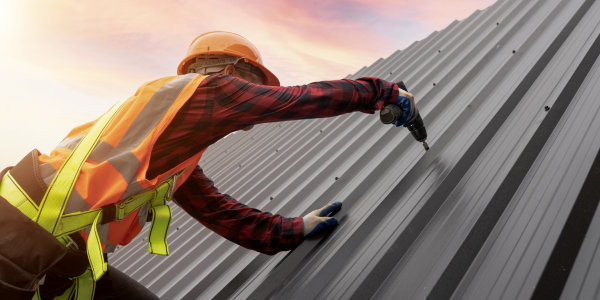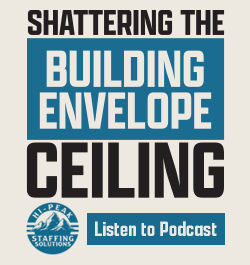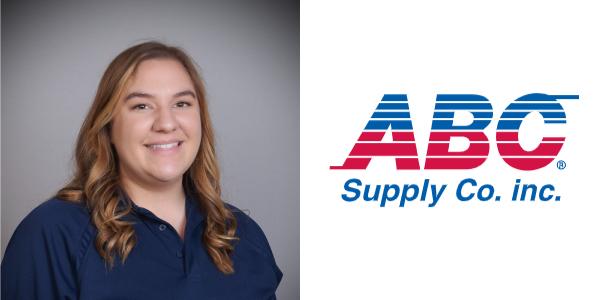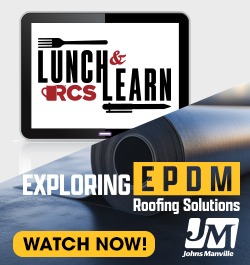A Reflection on the State of Roofing – 2023

By Brad Van Dam, MTL Holdings.
MTL Holdings VP, Brad Van Dam, reflects on the state of the roofing industry in 2023.
After attending his second National Roofing Day in Washington, D.C. earlier this year, Brad Van Dam, vice president of MTL Holdings, reflected on the important and relevant topics that the roofing industry is currently facing. This reflection led to him writing a blog post titled, “State of the Roofing Industry – 2023", in which he reflects on the last several years and his history within the industry, and what the future holds for us. Brad wrote the following:
Introduction
Attending my second National Roofing Day in Washington, D.C. in April created a wonderful opportunity to reflect on many of the major themes we’re currently facing in the industry. It prompted me to review last year’s “State of the Roofing Industry” blog as we continue to attempt to look around the corner we are speeding towards. History gives us lessons, and the past three years have certainly provided masterclass learning opportunities for manufacturers, contractors and distributors engaged in commercial roofing.
In my 11th year in the roofing industry and 29th year in construction, I continue to be grateful for the opportunities this industry has provided so consistently during my tenure, even through some of the toughest times.
The previous few years were marked by rising costs and inflation, supply chain disruptions and labor shortages, but as we look ahead, there is reason for cautious optimism. From the return to more normal lead times and availability, to green shoots in attracting and retaining a skilled labor force, and a growing emphasis on sustainable building materials and transparency, there are many factors that will continue to shape the roofing industry positively. My hope is that advancing and discussing these issues and potential solutions can ensure the industry’s longevity and continue to expand the number of humans who find the opportunity for prosperity and equity the roofing industry provides.
Supply chain
Material lead times for main components in the commercial roofing industry have returned to more normal levels. There remain pockets of material availability issues, however recent general contractor reporting from Gilbane identified Roofing (Select Materials) as having some of the lowest lead times of other key construction materials. Their report from Q1 contained significant data on the trends for commercial construction and is quite insightful. The Global Supply Chain Pressure Index has also course corrected from its frantic state during the past few years and, for those interested in diving deeper into the data, can be found here.
I realize stating “the supply chain will improve in 2023” is a bit akin to saying snow may turn to water when the sun comes out given how difficult it was during parts of the last few years, however, the most crucial point of the matter remains: what did we learn?
Planners were rewarded. Just in time ordering was not. Partnerships between and with distributors, manufacturers and contractors were critical. Inventory levels should be discussed throughout the value chain, not solely in an office occupied by the CFO, purchasing agent or controller. On the manufacturing side, specifically metal components, we began to see the direct impact of mill capacity and utilization rates on material availability, and saw limitations applied in the form of allocations.
What is clear now is that carrying costs have increased exponentially for lines of credit and are placing increased pressure on contractor cash flow, days payable outstanding, and the ability to maintain large levels of inventory on a just-in-case basis. It is safe to project that high inventory levels will continue to decline through 2023 and the partnerships between manufacturers, contractors, and distributors in the roofing industry will return to a new normal. The lesson(s) learned will involve a definition of new normal and will include changes to reinforce supply chains at all levels, improve supply chain relationships, and mitigate future risk in the supply chain. We saw examples of this in the exploration of various architectural paint finishes, which were impacted during the supply chain discombobulation.
Labor
I grew up in Chula Vista, California, minutes from the U.S./Mexico border, with a parent in the glazing trade. From an early age, it was clear to me that immigrants have long been a driving force in building and growing our economy. It is good to have a society that many people with hope want to be a part of, and maintaining a society and system worth that hope is not easy. Fixing immigration issues in our country is unfortunately difficult, as the disagreement between our two-party political system has indicated. I believe hard things in life are worth doing. I also believe having a diverse and growing workforce in the U.S. roofing industry is worth the undertaking. In 2019, the Roofing Alliance financed a study surrounding the U.S. roofing workforce and noted the labor gap to the labor need was “worse than we thought.” There have been exceptional training and outreach investments by the industry. Organizations like the National Roofing Contractor’s Association (NRCA) and National Women in Roofing (NWiR) continue to speak and act to ensure anyone can find opportunity in this industry.
There remain key structural issues to be addressed. NRCA has continued to lead efforts to drive balanced immigration reform that addresses workplace needs. Specifically, NRCA supports the Essential Workers for Economic Advancement Act to establish a visa system that supports the 21st century economic need. The number of H2B visas each year is quite limited and can be difficult to execute with red tape. NRCA also supports the expansion of the WIOA with additional funding and reforms, along with pushing for significant funding improvement to Perkins and Technical Education State Grants.
As I discussed with one lawmaker during Roofing Day in D.C., the roofing industry is asking for the government to take their funding thumb off the scale which currently steers more federal dollars and attention to four-year college funding and less towards the trades. When the country needs more workers, the system should be nimble to flex for it, and when it does not, the system should flex the opposite way without red tape. We have learned this throughout the pandemic when roofing confirmed its essential status, and we continue to need the protection over the heads of our family and neighbors that the roofing industry provides.
Construction trade employment growth continues to be a leading factor in driving the unemployment rate in the U.S. to its lowest level in the last 50 years, despite the economic pressures of rising interest rates. While there was a well-known and documented shortage of construction workers before the pandemic, there is growing hope. Data from this past April, provided by the National Student Clearing House, reports that “Construction Trade Programs” saw a 19.3% increase in enrollment year over year, bringing back pre-pandemic enrollment numbers. Business Insider points to declining college enrollment during the same period and connects the sentiment that many believe a four-year degree is no longer as valuable as once thought.
Labor will remain an issue in 2023, regardless of whether a recession is declared and unemployment reverses course significantly. New employees coming in to replace experienced workers in roofing will challenge productivity initially. It is my prediction (and sincere hope) that the opportunity and equity that roofing provides, and the path for financial security and stability for one’s family, regardless of schooling, race, gender or background, will bring more humans to this industry. The path to well-paying jobs in construction is rapid and can lift many out of poverty quickly and efficiently.
Sustainability
Sustainability continues to slowly make its way into the roofing industry. We have seen increased regulations on carbon pollution, and an emphasis on building materials and clean energy. Building owners, architects and specifiers are requesting more transparency and accountability into the materials that are being used in the construction of their facilities, and, in accordance with the Build America Buy America Act, materials produced and offered in the U.S.
In 2022, the industry saw an increase in requirements for documentation surrounding where and how a product is made, what building materials contain, and more correlations to carbon footprints and the environment. Material shortages and cost increases challenged these requests and tested the resolve of those requiring specific products. The 2023 industry will see advancement in compliance and understanding of building materials and their impact on sustainability. The time and effort spent on supply chain the past two seasons will result in better future decisions on purchasing, including sustainable and eco-friendly selections.
Low-slope commercial roofing remains a primary platform to grow sustainable options, ranging from solar to cool roof, green and blue roof options being placed on top of single ply systems as a platform. Commercial roofing manufacturing companies have responded well in this regard with significant financial investments that will present the labor force with continued opportunities to reduce the environmental impact of their installations. The specifier will continue to drive sustainable options, and the speed at which re-roof materials trend green will be driven by how well the industry understands and communicates these benefits to the contractor who selects products for these applications. In addition, significant work by Polyisocyanurate Insulation Manufacturers Association (PIMA) and NRCA surrounding energy impact and expensing rules in tax code will encourage selection of products that reduce impact to our power grid and the environment.
Conclusion
Looking back at the challenges of 2022, the roofing industry had to grapple with rising costs and inflation, lead-time and inventory management and labor shortages. However, 2023 has brought with it a glimmer of hope, as roofing materials have become more readily available with less dramatic cost swings and standard lead times returning. Inventory will return to more normal levels and the question of whether the market will return to traditional "just in time" ordering or maintain an elevated level of inventory remains unanswered.
As for the labor shortage, increased trade involvement in the U.S., the potential for minorities and women to find opportunity in the industry, will bring us closer to narrowing that gap in 2023. The industry is also poised for continued advancement and understanding of sustainability, and for environmentally conscious options to become viable solutions. By taking lessons from past and current trends, the roofing industry can shape better outcomes moving forward. The past year has shown that commercial roofing is resilient, and it is up to all of us who value the industry to enact solutions to ensure the roofing industry’s security and stability for future generations. Protecting our family and neighbors where they work depends on this.
About Brad Van Dam
Brad Van Dam is the Vice President of MTL Holdings, the parent company of Citadel Architectural Products, Hickman Edge Systems, and Metal-Era. Together, Citadel, Hickman and Metal-Era hold the broadest portfolio of tested roofing and building envelope securement solutions on the market. Brad is the current President of SPRI (Single Ply Roofing Industry), serves on three not-for-profit boards, and coaches youth volleyball for Milwaukee Sting Volleyball Club in Menomonee Falls, WI.
Original article source: Metal-Era
Learn more about Metal-Era in their Coffee Shop Directory or visit www.metalera.com.
About Metal-Era, Inc.
Celebrating over 40 years of unequaled service in the industry, Metal-Era provides a wide selection of engineered roof edge systems designed to meet the roofing industry’s strictest standards. Metal-Era has made a significant investment in their manufacturing with dynamic robotic production and high volume to standardize products and improve efficiencies – equating to consistently higher performing products that ship fast to their customers, supplementing labor with pre-fabrication. Metal-Era employees and its nationwide network of experienced representatives and distributors are committed to providing superior products and personalized service. For more information about Metal-Era, visit www.metalera.com.























Comments
Leave a Reply
Have an account? Login to leave a comment!
Sign In